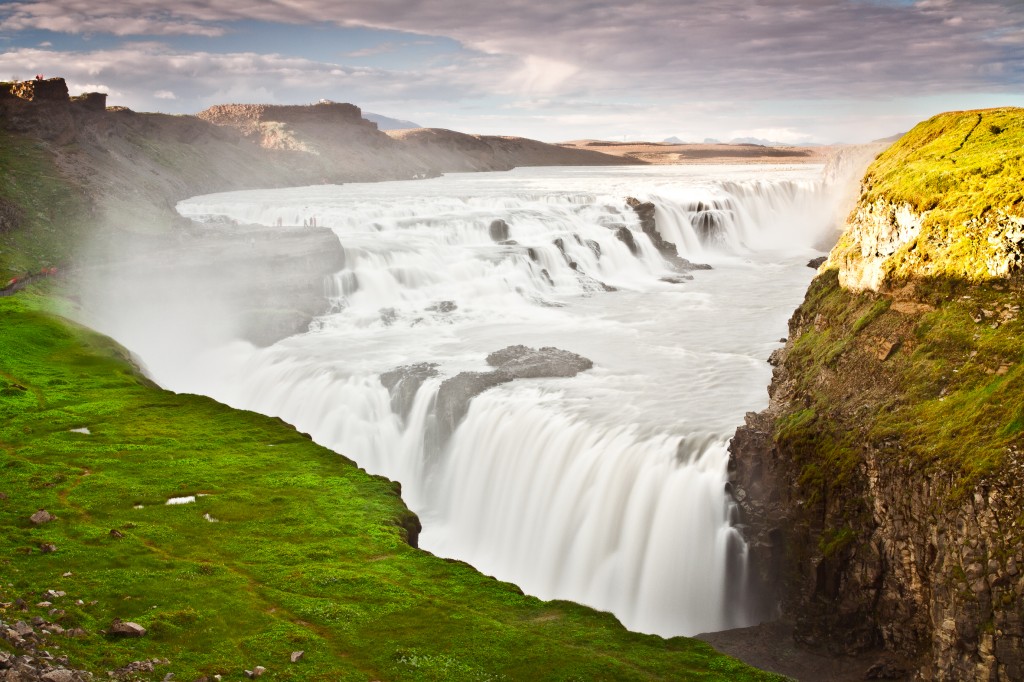
“Gullfoss” by Miloš Rusnák, distributed by the European Geosciences Union under a Creative Commons license.
For anyone who spent the 1980s jamming to British band Echo & the Bunnymen, this is a familiar sight. The cover of their third studio album, Porcupine (1983), features the band nonchalantly standing in front of the gushing white foam of Iceland’s Gullfoss waterfall. Mentioned in local written stories and beamed across the world in music videos, the Gullfoss falls occupy a mythical place in human culture and remain one of Iceland’s most visited tourist attractions.
Gullfoss, or Golden Falls, is a two-tiered waterfall dropping a total of 32 m at 80-140 cubic metres per second depending on the season, with higher volumes experienced in the summer. Its powerful falls throw up a blanket of mist, often crowned with a rainbow, as water from the Hvita (or White) River crashes downwards. Gullfoss derives its name from the golden appearance of the water, which obtains its distinctive colour because it contains sediment carved from the bedrock by glacial ice.
Miloš Rusnák captured the magic of Gullfoss on holiday to Iceland in the summer of 2011. He explains, “The image was taken relatively late in the evening when I was on a cycling trip with a colleague. The sun was already quite low and the left side of the canyon was entirely in the shade. I tried to balance the exposure using three Cokin filters (ND 1,2 for long exposure and graduated filters ND 1,2 soft and ND 0,6 soft). The advantage of evening shooting was that we avoided the hordes of tourists that can usually be found around the falls during the day.”
“This picture was shot with a Canon EOS 50D, 17-40 4L lens, aperture f16, exposure 4s, ISO 100 at 35 mm focal length,” he adds.
Along with Thingvellir National Park and the geysers at Haukadalur, Gullfoss is one of three sites within Iceland’s popular Golden Circle of natural attractions.
Imaggeo is the EGU’s online open access geosciences image repository. All geoscientists (and others) can submit their images to this repository and since it is open access, these photos can be used by scientists for their presentations or publications as well as by the press and public for educational purposes and otherwise. If you submit your images to Imaggeo, you retain full rights of use, since they are licensed and distributed by the EGU under a Creative Commons licence.
